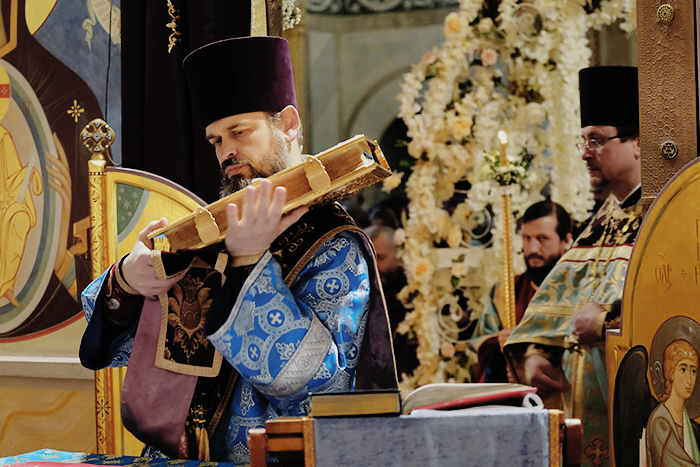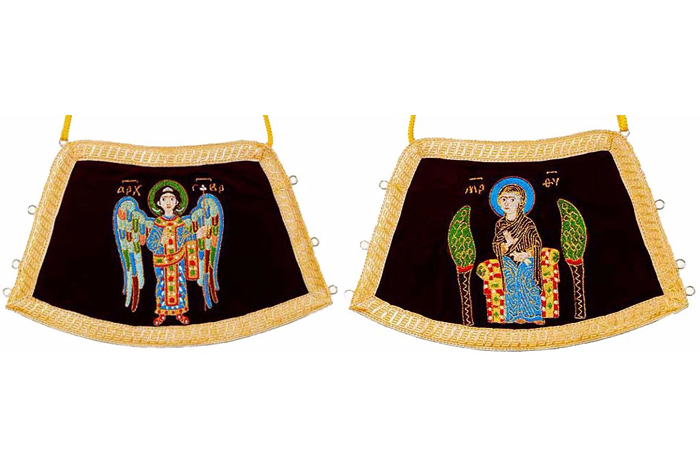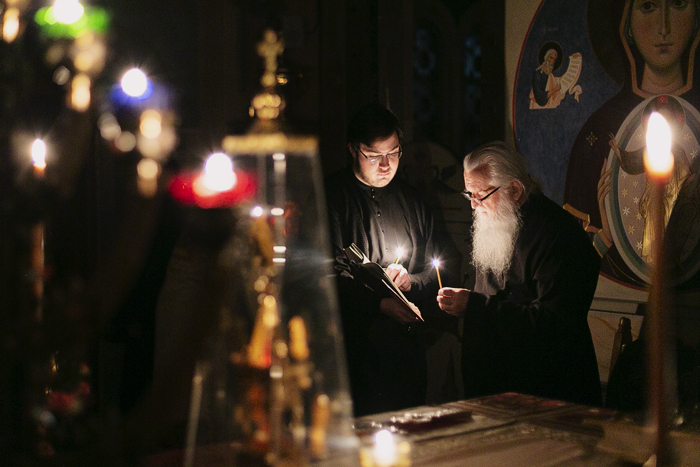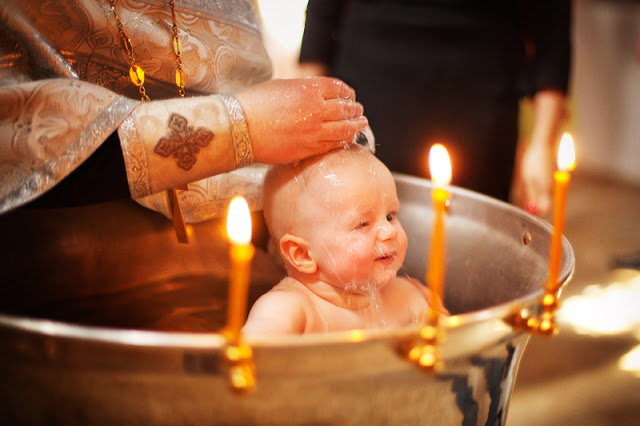
The Orthodox Liturgy is highly dynamic and agile. We see periodic movements of priests and clergymen throughout the service, particularly during the so-called Little and Great Entrances. These movements may appear confusing to an outside observer or to a person who has just begun to attend an Orthodox church. In fact, even a person who goes to church often may struggle to explain the meaning and symbolism of certain parts of the divine service, let alone the original purpose and procedure of this or that sacred practice in the Church. Let us have a look at the significance of the Little Entrance in ancient times and its current role in the Divine Liturgy.
Entrance of the Celebrant. It was the entrance of the bishop and his clergy to the temple that was the opening act of the Liturgy in ancient times. Lay people would enter the church together with the clergymen, while some of God’s people were already waiting for priests in the temple. St. John Chrysostom testifies to it in his works, “When the leader of the assembly comes in, he says: Peace to all. People answer with And to thy spirit, and then everyone takes their seats and the reading of the Holy Scripture commences.” If we return to the time of the glorious preacher from Antioch, we may see a basic, primitive entrance of the clergy, not yet accompanied by any chanting. The clergymen and the bishop would sit on a special platform in the center of the church, known as the bamah, and the people would sit around them in the aisles of the temple, and thus the clergymen would be in the midst of the believers. We can still observe such a placement of priests and bishops during the polieley, which is an ancient part of the matins, as well as at the beginning of the hierarchical Liturgy, which indicates that the Eucharist presided over by the bishop preserves many archaic traces of the ancient liturgies. Thus, we see that a bishop does not participate in worship until the Little Entrance during a hierarchical Liturgy today; all exclamations are done by priests.
The Entrance of the Gospel. Over time, the initial part of the liturgy expanded and was enriched with additional chants. The Little Entrance ceased to be a visible indication of the beginning of the Liturgy. When Orthodox Christianity was adopted by Roman emperors, Christians came out of catacombs and started preaching about Christ, arranging religious processions and prayers on city streets. It was thanks to such processions along the streets of Constantinople that the three antiphons, the Trisagion, and other elements emerged and became an essential part of each Liturgy. During the Little Entrance the priests began to bring the Gospel into the Church. The Little Entrance was even called the “Entrance of the Gospel” in some manuscripts. The Proskomedia ritual also developed: now it was the priest who had to be the first in the church in order to prepare everything for the Eucharist, rather than the congregation waiting for its leader. It altered the original meaning of the Little Entrance as the entrance of the whole congregation into the church. For this reason, the symbolic explanation for this ceremony was that it embodied the beginning of Jesus’s public ministry. However, this sacred practice did not lose its original symbolism, either. Why is it important?
Both the distinctive features of the hierarchical service of the Eucharist, and the special prayer of the entrance, in which the priest calls upon the Lord to send the angels of God to enter the temple, so that they, too, would sing the same song, signal that the Liturgy itself is the “entrance”, the advancement, and the beginning of something new. The essence and purpose of the entrance is to approach the Throne of God, the altar, the main sanctuary of the temple, its center and pinnacle. The altar is traditionally perceived as a symbol of Christ and His Kingdom. The Eucharistic Sacrifice is performed on it; it is from this table that Christ will nourish His Church with heavenly gifts. Therefore, the Little Entrance is the beginning of our ascent to Christ. This awareness of the significance of the Little Entrance is particularly relevant and important for Christians who are not accustomed to regard the Liturgy as a shared Messianic feast, where everyone is encouraged to participate not only in praise and thanksgiving, but also in the Eucharistic meal, namely the communion of the Holy Sacrament of Christ. Thus, the Little Entrance is not just about Christ beginning his public ministry, but also about the beginning of his Parousia (his mystical presence), an enthusiastic movement of the whole congregation towards Christ. Each member of the congregation is called to take part in this entrance and ascend to Heaven.




St. John witnesses that the people sat-but on what? Pews hadn’t been invented yet. I don’t doubt his witness but it does seem odd that people would sit for any procession.
The correct term is Small Entrance
The term ‘Little Entrance’ is used more often and in most Liturgical texts.